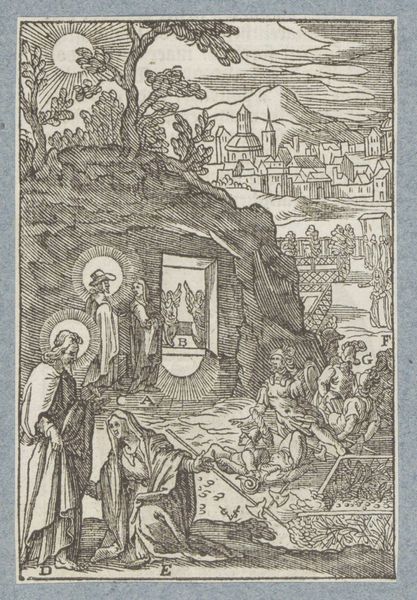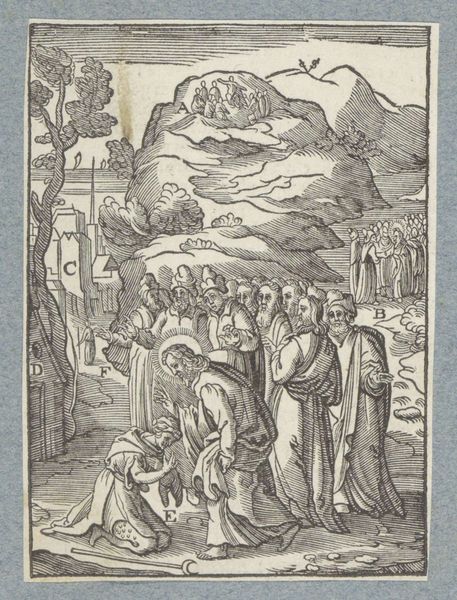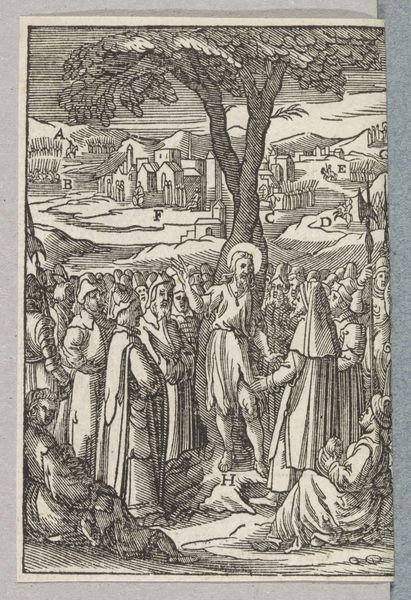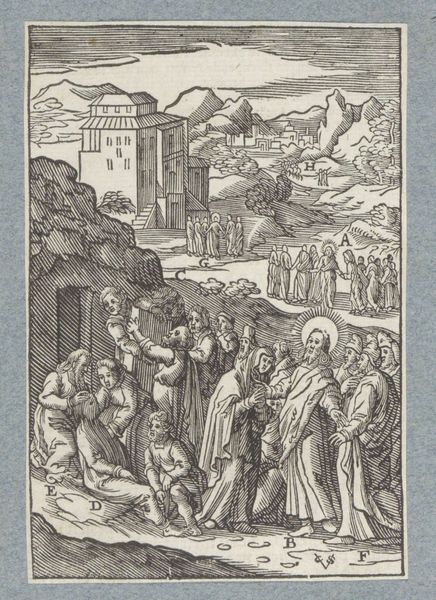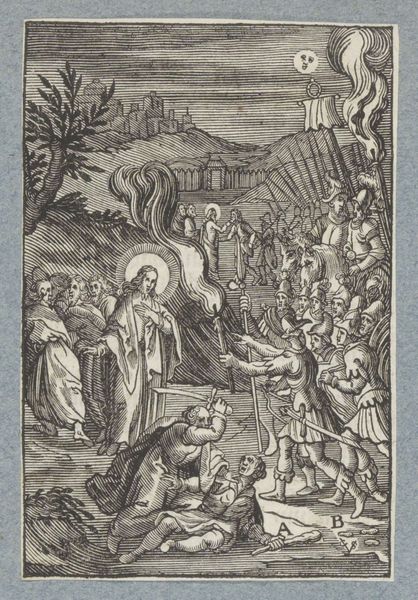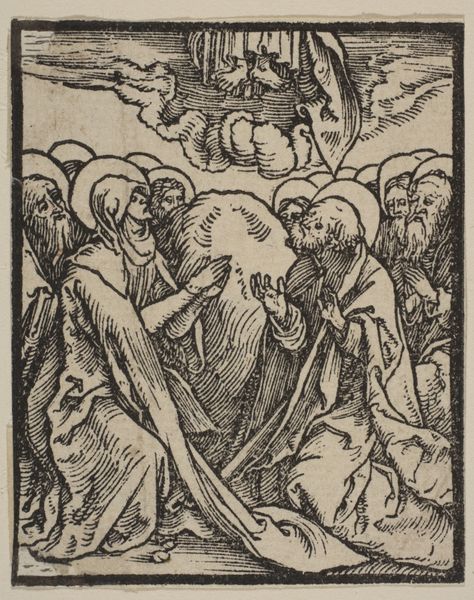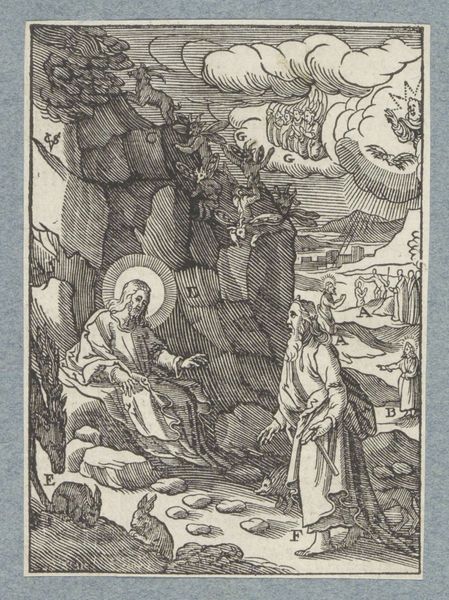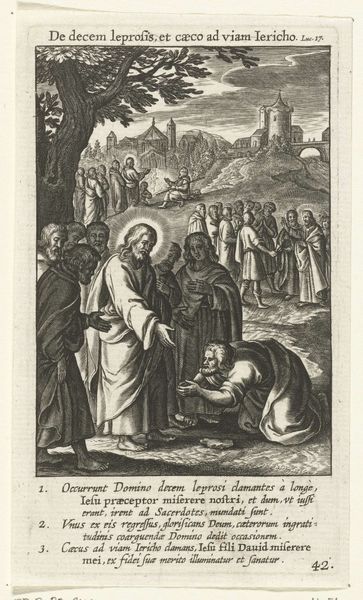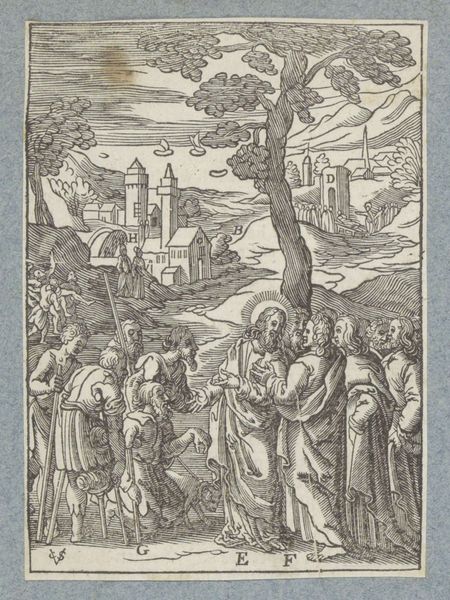
print, pen, engraving
#
baroque
#
pen drawing
# print
#
landscape
#
figuration
#
line
#
pen
#
history-painting
#
engraving
Dimensions: height 109 mm, width 73 mm
Copyright: Rijks Museum: Open Domain
Editor: So, this is "Intocht van Christus in Jeruzalem" by Christoffel van (II) Sichem, created sometime between 1648 and 1657. It's currently at the Rijksmuseum. The medium is listed as engraving, and it strikes me as both meticulously detailed and rather busy. It’s hard to know where to focus. As an art historian, what draws your eye when you first encounter a piece like this? Curator: Given its socio-political context, it’s useful to understand the intended audience. The detailed line work, characteristic of engravings and the Baroque period, suggests this piece aimed to illustrate religious narratives broadly, rather than appeal to wealthy patrons specifically. Does that align with your impression? Editor: Yes, that makes sense. It feels… accessible, even with all the figures. So, how might the societal landscape of the Dutch Republic have shaped a print like this depicting the Entry into Jerusalem? Curator: The Dutch Republic, at this time, saw a surge in the printing press industry, therefore also in availability and dissemination of prints. These prints provided visual catechism of the biblical narrative at a moment of public contestation, amidst wars of religion. This image is also intriguing because of the integration of landscape; in which traditions was Sichem working? Editor: That’s fascinating. I hadn't considered the economic impact of printmaking on religious imagery! Could the prominence of the city in the background also be connected to the rising power of the Dutch Republic's urban centers? Curator: Precisely! The city as backdrop reinforces the socio-political impact. Do you think there might be visual relationships or discrepancies between that imagined cityscape and Jerusalem as a symbol? Editor: Absolutely! It adds another layer to the interpretation. The visual rhetoric is complex, but effective, when contextualized like this. I appreciate learning how social history enriches the visual experience.
Comments
No comments
Be the first to comment and join the conversation on the ultimate creative platform.

